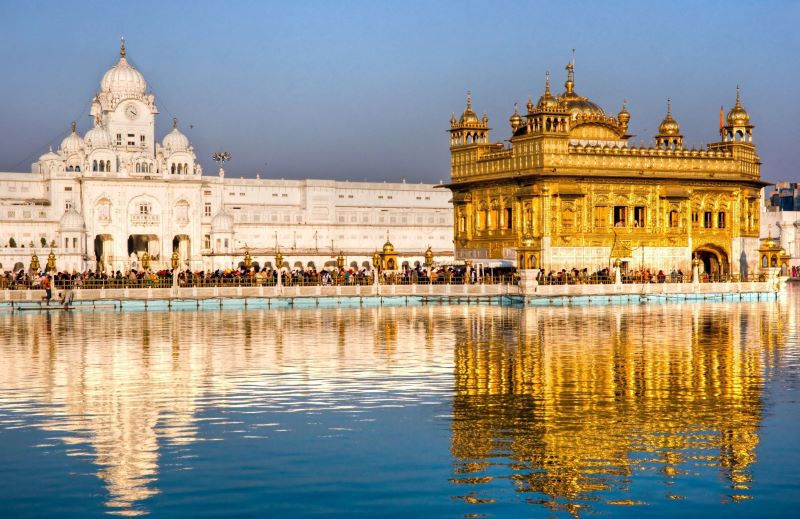 Gurudwara Sahib stands as a beacon of spiritual devotion, community service, and divine worship in Sikh tradition. These sacred spaces, literally meaning “Gateway to the Guru,” are designed for prayer, meditation, and connecting with the divine teachings of the Guru Granth Sahib. They represent centuries of spiritual heritage and serve as centers for both worship and community welfare.
Gurudwara Sahib stands as a beacon of spiritual devotion, community service, and divine worship in Sikh tradition. These sacred spaces, literally meaning “Gateway to the Guru,” are designed for prayer, meditation, and connecting with the divine teachings of the Guru Granth Sahib. They represent centuries of spiritual heritage and serve as centers for both worship and community welfare.
Unfortunately, a troubling trend has emerged in recent years. Many visitors now enter these holy premises not with reverence and spiritual intent, but primarily for photography and videography purposes. What was once a sanctuary for the soul has increasingly become a backdrop for social media content and casual photography sessions. This shift represents a fundamental misunderstanding of the Gurudwara’s purpose and significance. While the Sikh faith welcomes all people regardless of background, religion, or social status, there remains an expectation that visitors will maintain appropriate decorum and respect for the sacred environment.
Perhaps most concerning is the observation that some couples use these premises for romantic photography or intimate moments. This behavior directly contradicts the spiritual atmosphere these spaces are meant to maintain. Such actions not only show disrespect to the religious significance of the Gurudwara but also disturb other devotees who come seeking spiritual solace and connection with the divine.
The Gurudwara is a place where devotees come to meditate and pray, where families seek blessings for important life events, where community members gather for spiritual discourse, and where the elderly find peace and comfort in their faith. When these spaces are treated as mere photo studios or romantic venues, it disrupts the spiritual energy and defeats the very purpose for which these sacred buildings exist.
The management committees of Gurudwaras face a delicate balance between maintaining the Sikh principle of universal welcome while preserving the sanctity of worship. However, the current situation demands more decisive action:
Immediate measures are urgently needed to address this situation. Clear signage in multiple languages should be installed to explain appropriate behavior and dress codes to all visitors. Designated photography areas outside the main prayer hall could be established for those who wish to take respectful photographs while maintaining the sanctity of the worship space. Volunteer guides should be positioned to educate visitors about Gurudwara etiquette and significance, while existing rules regarding appropriate conduct within the premises must be strictly enforced.
Long-term solutions require a more comprehensive approach. Educational outreach programs should be developed for schools and communities to teach about the significance of Gurudwaras and proper conduct within them. Social media campaigns can be launched to promote respectful behavior in religious spaces, while collaboration with tourism boards ensures that visitors receive proper guidance before entering these sacred premises. Community engagement initiatives should work to create broader awareness about the importance of maintaining sanctity in religious spaces.
The responsibility to maintain the sanctity of Gurudwara Sahib extends beyond the management committees to every visitor who enters these sacred premises. When we allow casual behavior to overshadow spiritual purpose, we risk losing the very essence that makes these places special. The Sikh faith teaches respect, humility, and service to others. These values should be reflected in how we conduct ourselves within Gurudwara premises. Every visitor, whether Sikh or non-Sikh, devotee or tourist, has a role to play in preserving the spiritual atmosphere that has been cultivated over centuries.
It is time for a collective awakening to this issue. Management committees must implement and enforce guidelines more strictly, while visitors must educate themselves about appropriate behavior before entering these sacred spaces. Only through combined effort can we ensure that Gurudwara Sahib continues to serve its primary purpose as a place of worship, meditation, and spiritual growth.
The beauty of a Gurudwara lies not just in its architecture or visual appeal, but in the spiritual energy and devotion it embodies. Let us work together to preserve this sanctity for current and future generations, ensuring that these sacred spaces remain true to their divine purpose.
Remember: A Gurudwara is first and foremost a house of God. All other considerations must remain secondary to this fundamental truth.